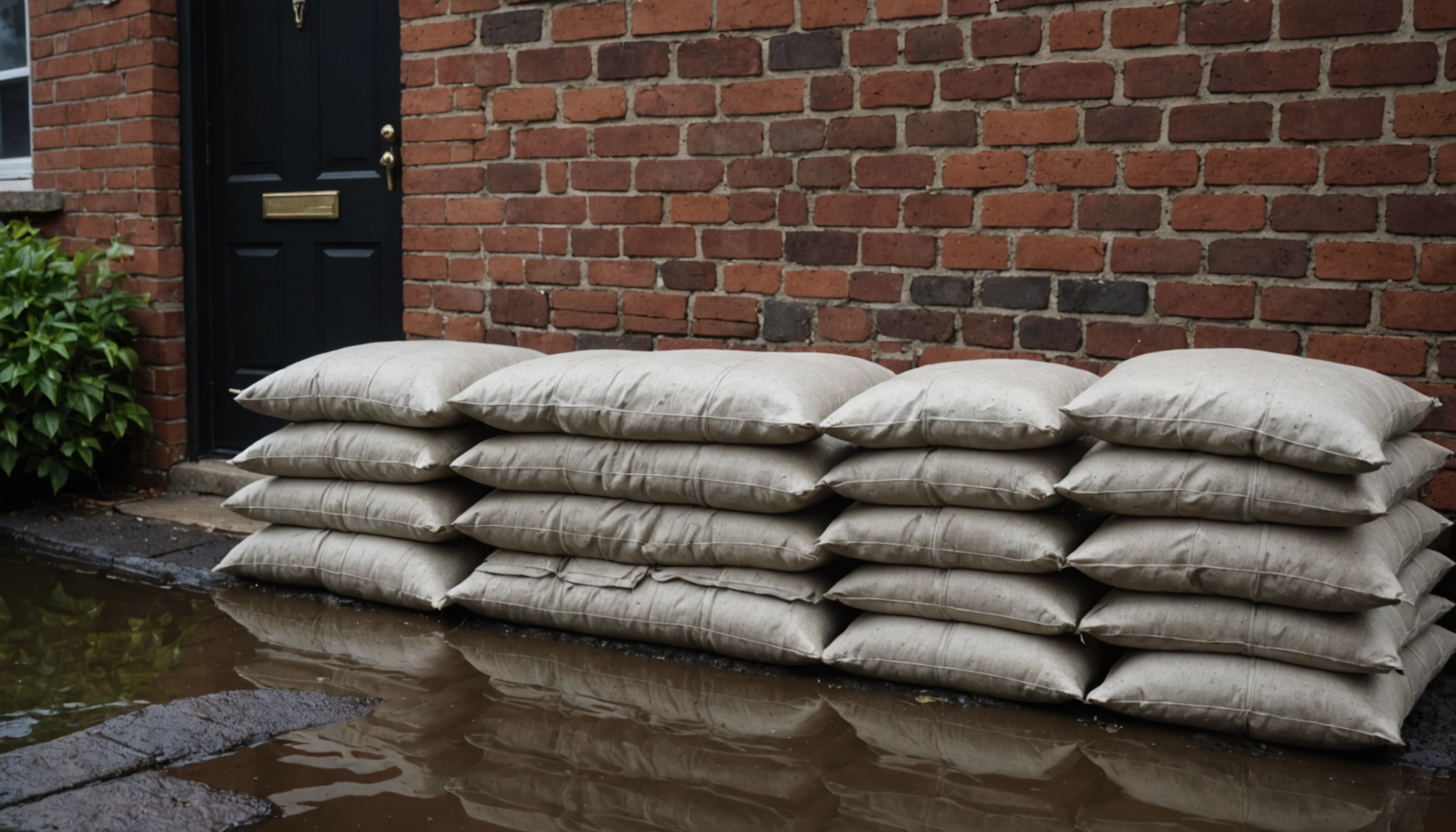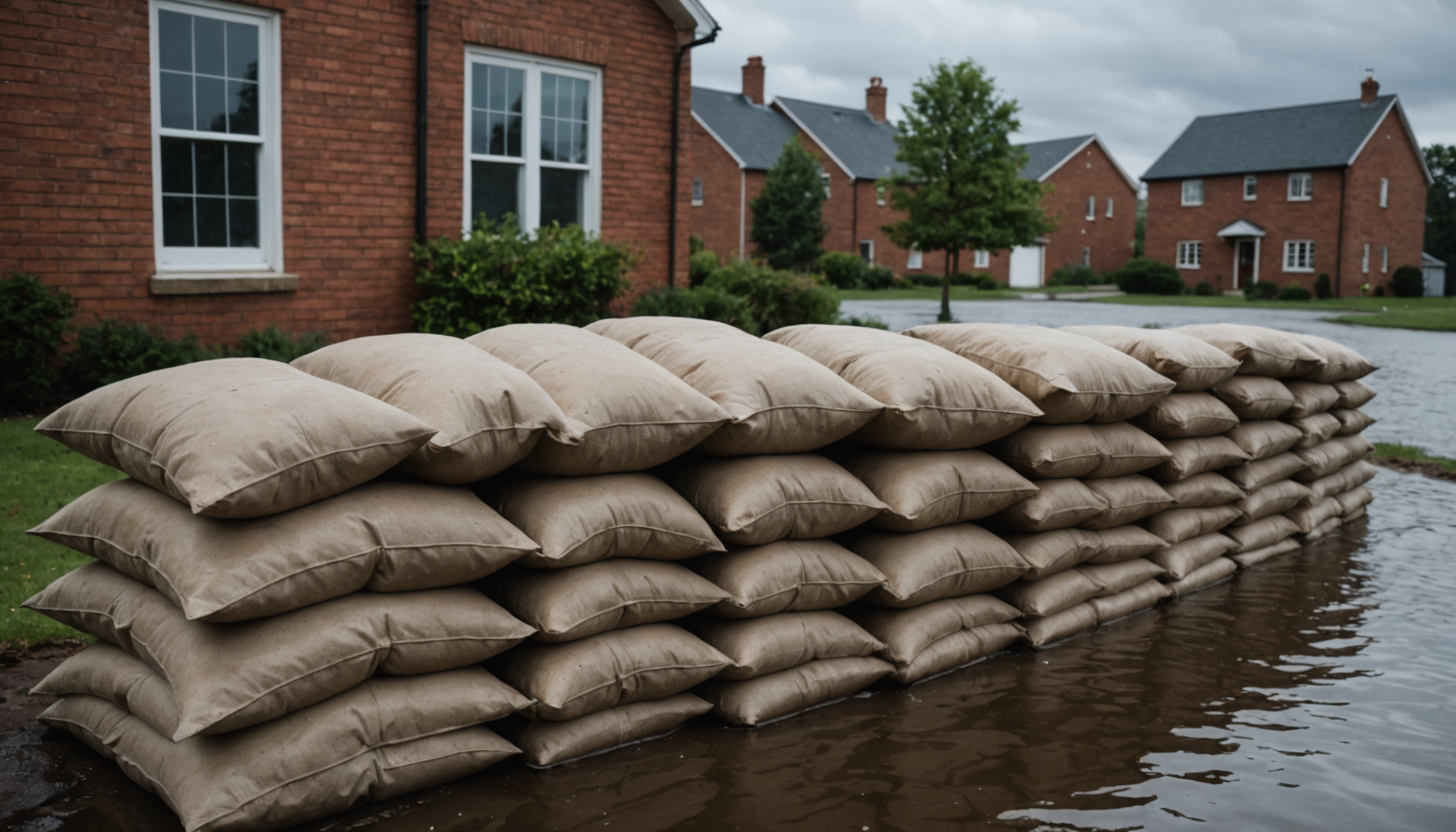 Understanding the flood risk in St. Louis is crucial for effective emergency preparedness, especially when it comes to safeguarding your property from potential flooding. With its unique geographical position along the Mississippi and Missouri rivers, St. Louis is particularly susceptible to flooding during heavy storms and periods of intense rainfall. According to the National Weather Service, the area has experienced significant floods in recent years, highlighting the need for proactive measures to mitigate risks associated with these natural events.
Understanding the flood risk in St. Louis is crucial for effective emergency preparedness, especially when it comes to safeguarding your property from potential flooding. With its unique geographical position along the Mississippi and Missouri rivers, St. Louis is particularly susceptible to flooding during heavy storms and periods of intense rainfall. According to the National Weather Service, the area has experienced significant floods in recent years, highlighting the need for proactive measures to mitigate risks associated with these natural events.
St. Louis residents must stay informed about their specific flood risk levels, which vary across the region. The Federal Emergency Management Agency (FEMA) provides flood maps that are an invaluable resource for determining whether your home is located in a high-risk flood area. These maps are updated periodically to reflect changes in floodplains and can be accessed online or through local government offices. Knowing your flood zone is the first step in understanding the necessary precautions for your property and personal safety.
Another critical component of understanding flood risk involves paying attention to weather forecasts and alerts issued by the National Weather Service. These alerts can provide advance warning of severe weather conditions that may lead to flooding, allowing residents to prepare accordingly. Establishing a reliable system to receive these alerts, such as signing up for text message notifications or utilizing specialized weather apps, can be enormously beneficial and provide timely information during an emergency scenario.
The historical data on flooding in St. Louis serves as a sobering reminder of the potential damages that can occur. The Great Flood of 1993, for instance, resulted in extensive destruction and highlighted vulnerabilities in the region’s infrastructure. As a result, many local and federal initiatives have since been undertaken to improve flood management and response strategies, but individual preparedness remains an essential component of these efforts. Through understanding your flood risk, you can make informed decisions about the use of sandbags and other protective measures, creating a safer environment for you and your family during storm seasons.
Selecting the right sandbags
When dealing with the threat of flooding in St. Louis, selecting the right sandbags is vital to effectively defend your home. Traditional sandbags are made from burlap or a woven polypropylene, each type serving distinct functions in flood control. While burlap is biodegradable and environmentally friendly, polypropylene tends to be more durable and water-resistant, making them a practical choice for long-term use.
When selecting sandbags, consider the size and weight that best suits your needs. A standard sandbag, when filled, typically weighs about 35-40 pounds, which is manageable for most people to handle. Properly filled sandbags provide a stable barrier against water but should not be overfilled, as this can lead to gaps or instability when constructing a sandbag wall.
In addition to traditional sandbags, other options are available, such as self-inflating sandbags. These innovative products expand automatically when exposed to water, reducing the manual labor required for filling. They are especially useful for those who might not have access to large quantities of sand or who require a swift response to an emergency situation.
To guarantee the highest level of protection, it’s essential to source your sandbags from a reliable supplier. Local hardware stores or emergency management agencies in the St. Louis area may offer sandbags during flood season. Alternatively, purchasing them online in advance ensures that you are prepared before a storm hits.
Careful consideration of sandbag materials and styles, as well as timely acquisition, is critical for defending your property effectively. By making informed choices, you can enhance your flood defense strategy and improve your readiness for severe weather conditions.
- The two most common sandbag materials are burlap and woven polypropylene, each having unique advantages.
- A standard filled sandbag should weigh between 35-40 pounds to create an effective barrier.
- Consider self-inflating sandbags for ease of use, especially in emergency situations.
- Ensure to purchase sandbags from credible suppliers, either locally or online, to avoid last-minute shortages.
- Opt for polypropylene sandbags when greater durability and water resistance are required.
Preparing your sandbag area
Before beginning to place your sandbags, it’s essential to properly prepare the area to ensure maximum effectiveness in your flood defense efforts. One common mistake people make is ignoring the ground conditions before laying down sandbags. Ensure the area where you’ll be placing sandbags is clear of debris and relatively level. Any rocks, sticks, or uneven surfaces can create gaps in your sandbag wall, allowing water to seep through. Thoroughly clean and, if possible, smooth the ground to provide a stable foundation for your sandbag wall.
Another typical error is neglecting to identify and seal basement or lower-level openings before placing sandbags. In St. Louis, where basements are common, covering and sealing these low-level windows, vents, and doors is crucial. Use plastic sheeting or heavy-duty tarps as a preliminary barrier against water. Secure these materials firmly in place with duct tape or other strong adhesives, ensuring they extend beyond the area where you plan to lay the sandbags. This added layer reinforces your flood defenses by preventing any water that bypasses the sandbags from finding its way indoors.
Misjudging the number of sandbags needed is yet another mistake. People often underestimate how many sandbags are required to protect a specific area, leading to insufficient coverage during an emergency. Measure the perimeter that needs safeguarding and consult online resources or local emergency management guides to calculate the appropriate number of sandbags for your situation. Always aim to have more sandbags on hand than you anticipate needing, as unexpected vulnerabilities can arise during storms.
Lastly, failing to account for water flow patterns is a common oversight. It’s important to consider how water naturally flows around your property. Strategically placing sandbags to divert water rather than just block it can be an effective strategy. Walk around your property, especially during heavy rains, to observe water runoff paths and adjust your sandbag placement accordingly. This foresight can prevent water from pooling in unwanted areas, effectively shielding your home from flooding.
By taking these preparatory steps—clearing the ground, sealing openings, properly estimating quantities, and understanding water flow—residents of St. Louis can build a strong foundation for an effective sandbag barrier, enhancing their property’s protection against potential flooding threats.
Building an effective sandbag wall
To build an effective sandbag wall, careful attention to technique and placement is key. Start by ensuring each sandbag is filled correctly. A common mistake is overfilling, which results in ineffective stacking. Sandbags should be filled about two-thirds full, allowing them to lie flat for optimal stacking. When building the wall, place the first layer of sandbags lengthwise across the flow of water with the open end of the bag facing inwards. This position minimizes the risk of water seeping through weak points.
Stack sandbags in an interlocking pattern similar to bricks, overlapping each new row to cover the seams of the row below. This staggered method distributes pressure evenly and strengthens the wall against flooding. Tamp each layer firmly to press out any gaps, which can compromise the structure’s integrity. A typical sandbag wall should be two to three times as wide as it is high to prevent toppling under pressure.
If possible, build the wall away from the foundation of your home or other structures to create a buffer zone and prevent water from pooling near critical areas. A secondary, smaller wall erected a few feet behind the main barrier can serve as an additional defense line against any overflow, adding another layer of security.
Moreover, don’t overlook the importance of diverting water away from the sandbag wall to prolong its effectiveness. Dig shallow trenches or place additional sandbags strategically to channel water around rather than directly towards your barriers, redirecting the flow and reducing direct pressure on your main defenses.
Consistency is crucial; check your sandbag wall throughout the storm and adjust as necessary. Keep extra sandbags on hand as backup reinforcement, ready to plug potential weak spots as they arise.
Building a robust sandbag wall is more than just stacking—it’s about strategic placement and ongoing maintenance. By implementing these techniques, residents of St. Louis can significantly enhance their flood defenses, turning anxiety into action and protecting their homes from the unpredictable forces of nature. Stay vigilant, stay prepared, and remember that your proactive steps can make all the difference in safeguarding your property during challenging weather conditions. You have the tools and knowledge to face the storm head-on, ensuring peace and safety for your family.
Maintaining your sandbag defenses
Monitoring your sandbag defenses during and after storms is crucial to ensuring their effectiveness and structural integrity. After heavy rainfall, inspect your sandbag wall for any signs of sagging or displacement. These can indicate water pressure, which might have weakened the barrier, necessitating immediate reinforcement with fresh sandbags. Address any visible damage without delay to maintain a solid defense line.
In addition to visual checks, palpate the sandbags for saturation. Over time, heavy rain can heavily soak sandbags, diminishing their ability to block water. Replace overly saturated bags to restore functionality. Regular maintenance of your sandbag wall’s height is equally essential, especially if water levels rise beyond initial predictions. This proactive approach can prevent breaches and mitigate the impact of floodwater on your property.
Also, consider the area surrounding your sandbag defenses. Remove any debris or accumulated sediment after each storm, as these can create new channels for water to bypass your barriers. Clearing gutters, downspouts, and nearby drainage systems is also important for redirecting water flow away from vulnerable areas.
Once the immediate threat has passed, remove any damaged sandbags to prevent them from becoming breeding grounds for mold and pests. Dispose of them according to local regulations, as many areas have specific guidelines for sandbag disposal post-flooding. Replace them with fresh bags to stay prepared for the next severe weather event.
A vigilant approach to maintaining your sandbag defenses not only ensures they perform optimally but also enhances the long-term resilience of your flood prevention efforts. Regular checks and timely interventions will provide peace of mind, knowing that your property remains well-protected against the risk of flooding.
- How do I know if my sandbag wall is holding up during a storm?
- Regularly inspect your sandbag wall for any signs of sagging or displacement during a storm. Feel the bags to check for excessive saturation, which can weaken the barrier and necessitate reinforcement.
- How often should sandbags be replaced?
- Replace heavily saturated sandbags immediately after a storm to maintain wall integrity. Additionally, check your sandbags every few months, especially before the rainy season, to ensure they are still in good condition.
- Can I reuse sandbags after a storm?
- Yes, you can reuse sandbags if they are still intact and not overly saturated or contaminated. Dry them thoroughly and store them in a dry, covered location to preserve their quality for future use.
- What should I do with damaged sandbags?
- Dispose of damaged or unsalvageable sandbags following local waste management guidelines. Some areas provide specific instructions for sandbag disposal, especially those used during flooding.
- How do I prevent water from seeping around my sandbag wall?
- Consider creating a buffer zone by building the wall away from the foundation of your home. Divert water with additional sandbags or shallow trenches to redirect flow around—rather than towards—your sandbag defenses.
